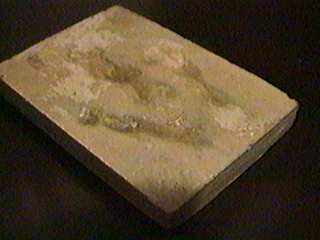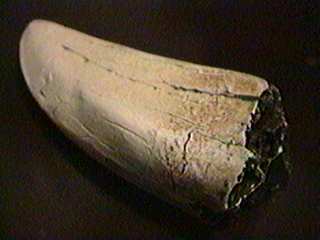pop up description layer
HOME
Cryptozoology UFO Mysteries Aviation Space & Time Dinosaurs Geology Archaeology Exploration 7 Wonders Surprising Science Troubled History Library Laboratory Attic Theater Store Index/Site Map Cyclorama
Search the Site: |
|
Tracks and Casts
Scientists often are able to identify a known animal, or be alerted to a new species by examining the tracks left by the animal in the soft mud or soil after a rain. Scientists have two techniques that allow them to make a permanent record of these tracks for further study: photography and casting. Photographing tracks is quick and easy, but doesn't capture the track in three dimensions. Casting, by pouring a liquid into the track and letting it harden, creates a copy of the paw, claw or flipper that originally made the track. Traditionally plaster of Paris has been used to fill the track, but any substance that will fill out the impression and then harden to maintain the shape will do. Once the cast is made it, in turn, can be used to create a cast of the track and that in turn can be used as a mold to make additional casts of the animal's foot. In this manner many scientists can study the track while only one of them needed to make a trip into the field to discover it. Casting isn't only done with recent tracks in mud. Tracks left by dinosaurs millions of years ago in what, eventually, became hard rock, can also be copied by the casting technique. Casts aren't limited to tracks either. All kinds of objects, including dinosaur bones and teeth, may be copied by covering the object with a substance like plaster, letting it harden, then cutting the cast in two. This forms a mold, shaped like the object. By filling that with something like liquid plastic, an exact copy of the shape of the object can be made. Museums often use this technique to copy dinosaur bones. This allows a museum that doesn't own an exhibit, say like a Tyrannosaurus Rex skeleton, to get a replica of the skeleton from casts made at a museum that does have the Rex bones.
Copyright Lee Krystek 1996. All Rights Reserved. |
|
Related Links |
|
|





